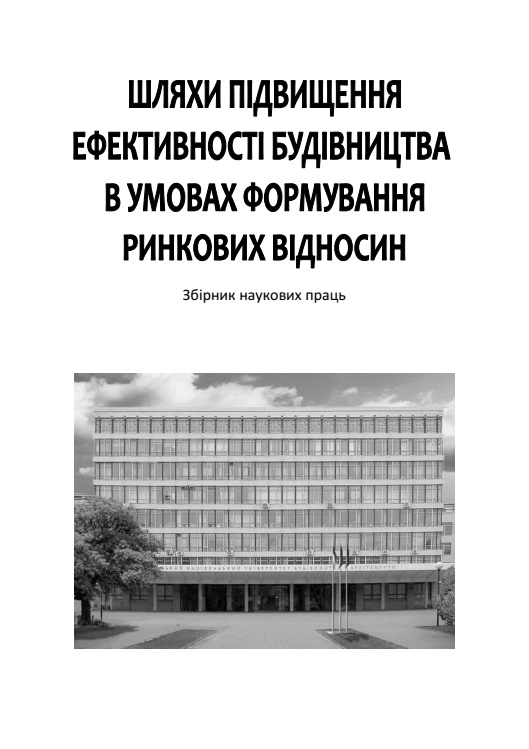Rating modeling of the primary residential real estate market of Ukraine
DOI:
https://doi.org/10.32347/2707-501x.2019.40.25-35Keywords:
primary market, residential real estate, integral index, regional characteristics, cluster analysis, rating modeling, comparative analysis, allocation of regions.Abstract
The article analyzes the characters of functioning of the primary residential real estate market the regions of Ukraine. A system of indicators that reflect their condition, development intensity and consumer characteristics of residential houses under construction was used. It was made a cluster analysis of the regions of Ukraine by k-average classification method based on these indicators. Then the regions were ranked according to the criteria of the level of attractiveness of construction and the risk of stopping construction based on the calculated integral indicators. The resulting allocation of regions was analyzed. The calculations made allow us to predict the profitability of the construction activity, estimate the costs and revenues, and the associated risks in a regional context.
References
Isaienko, D.V. (2010), “Derzhavna polityka u sferi zabezpechennia stijkoho funktsionuvannia budivel'noi haluzi”,Aktual'ni problemy derzhavnoho upravlinnia : Zbirnyk nauk. prats', vol. №1(37), рр. 115–121.
Mezentseva, N. I.,Dmytriieva, K.Ye.,Kuchevs'kyj, A.A. andMarynych, K.O. (2012), “Rynok zhytla Ukrainy: suspil'no-heohrafichne doslidzhennia”,Ekonomichna ta sotsial'na heohrafiia, vol. 64, рр. 137 - 146.
S.A. Fesak (2013), “Rynok nerukhomosti iak ob'iekt derzhavnoho rehuliuvannia v Ukraini”,Publichne upravlinnia: teoriia ta praktyka, vol. 1, рр. 147-154.
Stupniker, H.L. (2014), “Osnovni napriamy derzhavnoi zhytlovoi polityky v konteksti zabezpechennia dostupnosti zhytla”, Stratehichni priorytety : naukovo-analitychnyj schokvartal'nyj zbirnyk. Nats. in-t stratehichnykh doslidzhen', vol.№ 4(33), рр. 83-87.
Pavlov, K.V. (2018), “Investytsijne zabezpechennia konkurentnoispromozhnosti rehional'nykh rynkiv zhytlovoi nerukhomosti”,Zbirnyk naukovykh prats' [Bukovyns'koho universytetu]. Ekonomichni nauky, vol.№ 14, рр. 79-86.
Statystychna informatsiia za vydom ekonomichnoi diial'nosti - budivnytstvo. Derzhavna sluzhba statystyky Ukrainy. URL: http://www.ukrstat.gov.ua/
Pokaznyky oposeredkovanoi vartosti sporudzhennia zhytla za rehionamy Ukrainy stanom na 1 zhovtnia 2018 roku. Ministerstvo rehional'noho rozvytku budivnytstva ta zhytlovo-komunal'noho hospodarstva Ukrainy. URL: http://www.minregion.gov.ua/napryamki-diyalnosti/building/pricing/tsinoutvorennya/
Informatsijno-analitychnyj portal nerukhomosti LUN. URL: https://www.lun.ua/uk
Informatsijno-analitychnyj portal nerukhomosti DomRya. URL: https://dom.ria.com/
Shaposhnikova, I.O. (2019), “Klasternyj analiz pervynnoho rynku zhytlovoi nerukhomosti Ukrainy: prostorovyj rozriz”,Naukovyj pohliad: ekonomika ta upravlinnia, vol.1(63).
Vitlins'kyj, V. V. and Piskunova, O. V. (2010), Matematychni modeli ta metody rynkovoi ekonomiky: navch. posib. – K.:KNEU. – 531 s.
Hoiko A. F., Sorokina L. V., Rehida O. V. (2014), “Doslidzhennia efektyvnosti investuvannia zhytlovoho budivnytstva: rehionalnyi aspekt”, Budivelne vyrobnytstvo, Vol. 57, рр. 56–63.
Downloads
How to Cite
Issue
Section
License

This work is licensed under a Creative Commons Attribution 4.0 International License.
Authors who publish with this journal agree to the following terms:
- Authors retain copyright and grant the journal right of first publication with the work simultaneously licensed under a Creative Commons Attribution License that allows others to share the work with an acknowledgement of the work's authorship and initial publication in this journal.
- Authors are able to enter into separate, additional contractual arrangements for the non-exclusive distribution of the journal's published version of the work (e.g., post it to an institutional repository or publish it in a book), with an acknowledgement of its initial publication in this journal.
- Authors are permitted and encouraged to post their work online (e.g., in institutional repositories or on their website) prior to and during the submission process, as it can lead to productive exchanges, as well as earlier and greater citation of published work (See The Effect of Open Access).

